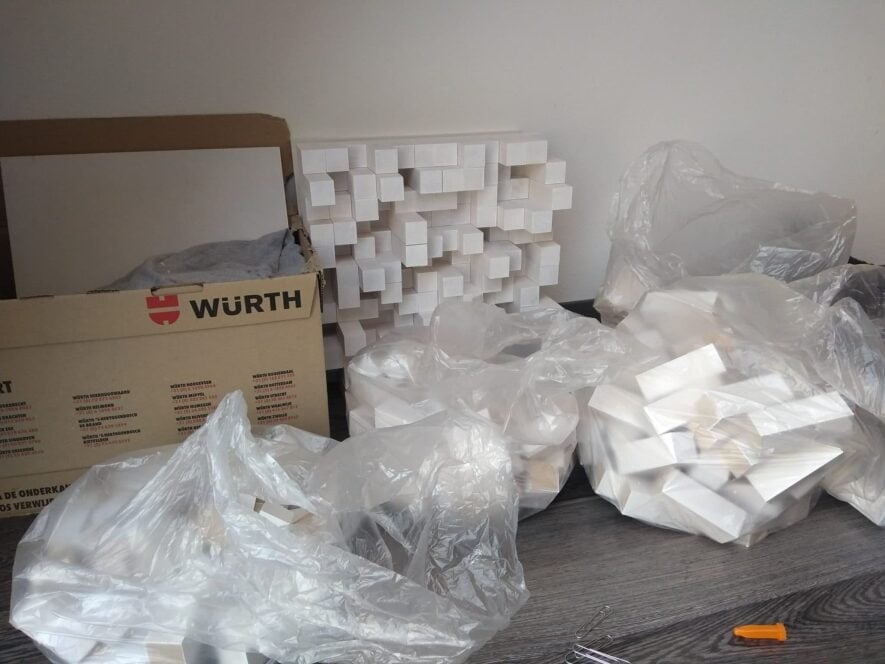

In this series on acoustics, we have discussed the impact of the room and the so called room-modes. Now we will look at how to address these room-modes. Do we take the active of passive approach?
There are – as is often the case within a hobby – two sides: enthusiasts who are completely against active room correction and enthusiasts who firmly believe in the active approach.
Now, we at Alpha Audio are neutral on this. And for a reason: there are pros and cons to both approaches.
First of all, you can only treat intrusive room reflections with a passive approach. Active systems cannot combat excessive reflections. You can extract energy from certain areas, but dissolving it will not do it: the reflection remains. It may be softer, but it is not gone. Unless you start applying very aggressive notch filters, with all the consequences!
A passive system, on the other hand, cannot address incorrect phase or impulse behavior. Only an active system can do that. Thus, with an active system you can compensate some of the ‘shortcomings’ of a speaker. And that is quite interesting!
Both methods are complex!

Now some enthusiasts will think: I’d rather go for the passive approach, because I’m not that technical and just don’t see myself tinkering with computers and microphones. We can follow that logic in a way, but know that a passive approach also requires the necessary knowledge.
In fact, a passive approach also requires a measurement of the room. You need to interpret this measurement correctly; where in the spectrum is there too much energy? What do the dips mean? How should I treat the room; where do I place absorption and where do I use diffusion (more on this later in this series).
Which software you use may vary. REW – Room EQ Wizard – is free, but quite complex. However, REW is extremely complete and in the end worth delving into. Especially if you want to fix your room yourself.
A second thing to think about is where in the room you are going to measure. Every spot in the room gives a different result. In short: determine well where you are going to measure in the room. Or maybe take an average?
Installing passive room correction – just like active room correction – is a profession. It is very interesting, but know what you are diving into!
Active
With an active approach, as an enthusiast you must also have the necessary knowledge and patience. First of all, there are quite a few systems on the market. Very silly, but true: roughly speaking, there are good and bad systems. We have by no means tested them all, but systems we have had good experiences with are Trinnov, Dirac Live, Anthem’s system (ARC), Illusonic and, for example, Böhmer. All of these are commercial systems.

With some systems, you buy a piece of hardware that you include in the chain. With others, it runs as software in a receiver or amplifier. In turn, both implementations have advantages and disadvantages.
What is important to realize is that active room correction processes a digital signal. With an analog input, it must first be made digital. With a digital signal, it stays digital.
The outcome is particularly dependent on how well this is done. We’re not just talking about the accuracy of the corrections, but also the precision while processing the digital signal. And, of course, on how well the digital signal is presented at the output. After all: jitter can be added back there as well.
An important detail: with Trinnov and Dirac, you can adjust the target curve directly in the software. This is quite important, because a straight line may seem ideal: it is not. Anyone who has tried this before knows that it sounds completely soulless and boring. It is a game of correcting and preserving the characteristics of the system. And that’s not easy.
Hybrid?

It should be clear that both passive and active systems have advantages and disadvantages. Both approaches work in a different way as well as have opportunities that the other does not have. Hence, we favor a hybrid approach….
The biggest problems are always in the low frequencies, as we pointed out in the article on room modes. That area is also the most complex to address. Bass traps are usually large and expensive. However, the bass can be corrected just fine with active room correction or products like the PSI AVAA. Now the question is whether the PSI AVAA can be categorized as an “active” approach…. we actually don’t think so. But we digress.
Starting at about 250 Hz, passive room correction is doable. We are talking about a wavelength of about 1.3 meters. It takes a quarter of the wavelength to treat it, so that comes down to about 32cm. That’s just about doable.
By placing treatment on each first reflection – diffusion or absorption, depending on what is needed – and addressing the bass with an active method, excellent results can be achieved!
In the next installment: diffusion or absorption?









Something else which i’ve noticed makes a huge difference, listening height. For example, i have 238cm floor to ceiling, my listening position and speakers (mid/Tweeters) are elevated to 119cm. When speakers and listening position are closer to the floor that’s when you excite the room modes (Bass). I got the idea of listening height from a couple of studios that i’ve visited.
Ow. Nice addition!
A 3rd option is to treat the whole room is you have that option/luxury.
Yes. That is absolutely the best of course!